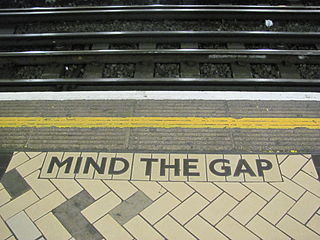Travellers on the London Underground are used to the announcement: ‘Mind the gap!’ This is to alert them that between the platform edge and the entry into the train there is often a gap of eight or nine inches, going straight down to the lines below.
Writers and artists spend much of their time pondering gaps – what to leave in and what to leave out – on the principle that less is almost always more. The great sculptors Henry Moore and Barbara Hepworth set out to explore what would happen when they chiselled their way through wood or stone, creating holes, apertures, tunnels. In Hepworth’s work especially we can see how triumphantly the space created by the gap heightens the impact of the work.
I remember on one occasion visiting a Hepworth exhibition at the Tate Gallery in London and standing in front of one of her large works which was pierced with a winding hole. Suddenly, on the other side, I saw another person gazing from the opposite vantage point and as we looked through the tunnel our eyes met and we smiled, sharing a moment of complicity. I was reminded of the words of The Prophet, writing on Marriage, where he says, ‘Let there be spaces in your togetherness.’
Those who practice meditation know the importance of space as well as silence – how, having breathed in, we rest for a few moments on the fullness of the breath, and then, after breathing out, we rest in the space of no-breath. The more we meditate the more we become aware of the space which surrounds the act of breathing and breathing out. It is a timeless space, giving us a glimpse of eternity.
One summer’s night, sleeping out on my balcony, I lay looking up at the tightly packed night sky. In one corner, a black cloud was suspended over a white cloud, behind which I could see a glimmer of light. Slowly, as the clouds moved apart, there in the gap appeared the tip of the moon. Gradually it emerged in full, a circle of white floating in the space of night. Simultaneously other clouds began to move aside and galaxies of stars were revealed. I thought of some lines of Henry Vaughan:
I saw Eternity the other night,
Like a great ring of pure and endless light.
I closed my eyes and went into a deep sleep.
